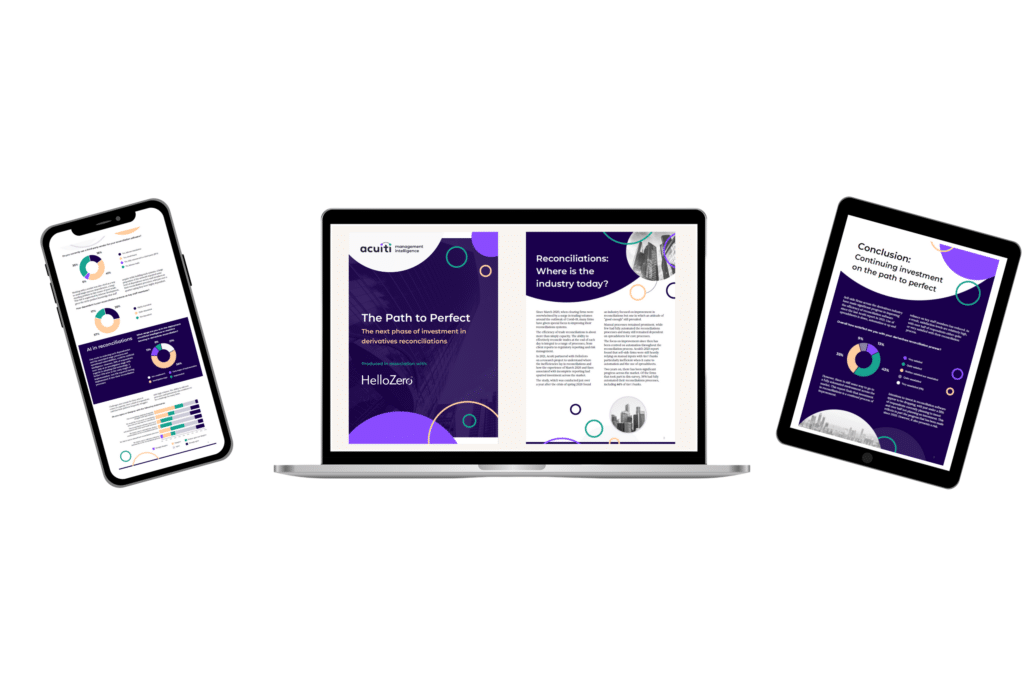Sell-side Clearing Management Insight Report
This report is based on a survey of Acuiti’s Sell-Side Clearing Network, and takes a detailed look at EMIR 3.0, CCP default risk, DORA and training in manual clearing.

In 2021, we published the report “Good enough is no longer good enough” which investigated the state of reconciliations following the volatility of Spring 2020 and the failings it exposed in sell-side post-trade processing. The survey revealed a market in the process of investing to address the problems of inefficiency and its reliance on manual processes. Two years later, we’ve teamed up with Acuiti again and released a new report “The Path to Perfect“. The report is based on a survey of the Acuiti Clearing Expert Network, a group of more than 100 senior executives.
Acuiti head of research Ross Lancaster said: “Firms across the sell-side have made significant progress since 2020 when it comes to increasing the efficiency of the reconciliation process. This reduces overall operational risk across the market and provides a competitive edge for firms that invest. However, there is still some way to go for many firms to optimise the reconciliations process fully”.
More than two-thirds of firms had made an investment in reconciliation software over the past three years with a majority using third-party software. As a result, 39% had fully automated their reconciliation processes, including 44% of Tier 1 banks, a significant increase on 2021.
One persistent area of inefficiency is the continued use of spreadsheets in the reconciliation process. While 36% of firms no longer used spreadsheets at any stage of reconciliations, a third still used them as part of the core process and 18% for external analysis of the data. In addition, firms are looking to run more reconciliation processes per day and over 20% experience difficulties when onboarding new clients or processes.
Fola Oyeleye, product manager at HelloZero, noted, “Spreadsheets are often the go-to tool for reconciliation processes because professionals in the sector have a long history of use on the platform dating back to their early work days. Most professionals are familiar with them and become hesitant to embrace new systems. While spreadsheets can give users a sense of control over small changes, normal workflows become fraught with problems when dealing with large datasets, complex business operations and the need for automation.”
Some of the questions that were asked in our 2023 study:

Matt Dolton, CEO, Kynetix said: “Kynetix is proud to be playing a part in the reduction of overall risk across the market. Firms that invest in HelloZero have an agile platform to reconcile high volumes of complex trading data as well as a secure backup that provides validation of trades in the event of other system failure or attack.”
This report is based on a survey of Acuiti’s Sell-Side Clearing Network, and takes a detailed look at EMIR 3.0, CCP default risk, DORA and training in manual clearing.
DORA is a complex and costly regulation, but is it a necessary response to the ever-growing importance of operational resilience within the financial sector?
Sign up using the option below to receive the latest articles sent straight to your inbox.